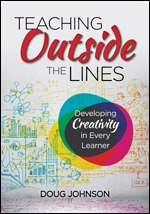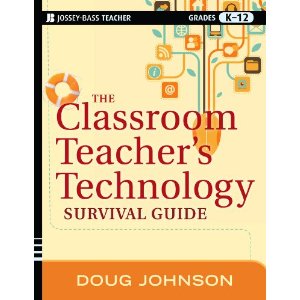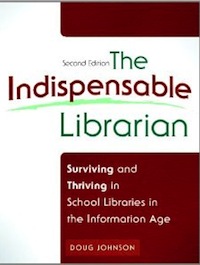The Role of Empathy in Instruction: Guest post by Bill Storm
 Wednesday, November 13, 2013 at 05:34AM
Wednesday, November 13, 2013 at 05:34AM One of my favorite t-shirt saying is "I need minions." While I don't have minions, I do have some very smart and thoughtful Blue Skunk readers who leave great comments. Since I am at AASL this week and may not have a lot of time to get much original writing done, I'm sharing a couple guest posts.
Enjoy this one from Mr Storm...
The Role of Empathy in Instruction
Bill Storm
Instructional Technology Coordinator
Davis Joint Unified School District
Davis, CA
While reading your 7 Myths About Empathy post, I found myself looking for a description of not just what empathy is or isn’t, but also how it actually functions in the course of instruction. Then I wondered, “Why am I looking for that?” As I read I remembered I had been provided with exactly that insight in the middle of my teaching career.
The path to understanding this many years ago was my biochemistry professor’s manner of delivering excruciatingly complex material; at least it was that for me. I was an adult learner, early forties, taking some career-necessary coursework at UC Davis. I was drowning, and apparently I wasn’t alone in feeling that way, and was seriously considering dropping the class. I remember the moment… at one point, the professor put down his dry erase pen after filling half the board with yet another enzyme reaction series. He turned toward the class, and with deep compassion in his eyes he proceeded to talk to us about knowing how difficult his was for us, how our brains needed time to unravel it on its own, and to not worry that we didn’t comprehend the complexity right at that moment. He then, as he had occasionally before, talked about the nearly miraculous nature of what it was we were trying to understand, that it was the essence of life itself, a complex process shared by virtually every living thing on the planet. He advised us to just take it in, relax, return to it often, and give our brains time to quietly sort it out.
That moment was a huge gift. Not only was he right about our brains and we how we come to understand complicated things, he used it as a teaching moment to share his love for the subject matter, and his compassion for us. He completely drew us into his discipline and communicated to us that both we and the content mattered, and the effect on us was quite amazing. I aced the damn class. My study partner (a second-career older adult) and I earned the two highest grades out of fifty or so in the class, but even our desperate-looking whippersnapper classmates did quite well.
I’ve had other experiences like this, with inspiring professors and teachers, but this particular one informed my own practice as a teacher because of his precisely directed, caring advice. I came to understand that the empathy relationship was bi-directional in a classroom, and that the deeper that relationship became the more powerful and permanent the learning. I became a much better teacher, and had much more fun. Teaching this way was personally more challenging, more emotionally risky, but I look back on my teaching days as having been very successful thanks to that understanding.
For me, this is the heart of why the teacher cannot be removed from the learning of complex subject matter. Learning a “discipline” happens when the learning setting is informed by a discipleship of following and seeking rather than 19th century discipline for punishment and order (The flogging will stop when morale improves.) Learning is often hard, at every age and level of development, and we can only be drawn to it as willing participants, not driven by compulsory anything.
 Bill Storm
Bill Storm 








Reader Comments (5)
Thank you, Bill Storm. Personal examples often run deeper than do categorical ones. Your piece spoke to me, and did it well. At the heart of real education lies a dialogue between teacher and student, a deep form of empathy. Some element of mutuality exists, and transforms both partners in the moment, not identically but truly. I appreciated your words.
RDS
Thank you, Dr. Stanton. I appreciate your comment and am humbled by the comparison.
Doug
Thank you for your comment, Dr. Stanton. Moments ago I had a conversation with a colleague on this very topic, and we agreed that some low-level skills such as using tech applications and simple vocabulary/image processing could indeed be taught by computer alone. So the corollary to this must be that if one teaches in such a way that a computer could do the job, perhaps one should be replaced by one. Such a trend might spur some folks to consider what is unique about being a human as we take on this very special role of teacher.
Hi again.
I do also endorse your conclusions with your colleague. Once, many years ago, I ran a computer network for a Community Mental Health Center. We used a number of programs, including the excellent cognitive-behavioral teaching programs of CATSco. They were excellent, patient "teachers." And, it freed me/other therapists to then discuss the impact and uses of the learned materials. What I guess I am saying is that it isn't either/or for me in the computer/helper (replace helper with teacher or therapist, etc.) realm. Both can be of assistance. My bias in terms of LONG TERM change is in favor of the teaching relationship. It is an important education issue that you are onto, I think.
Good luck. And, Perservere!
RDS
Thank you, once again, for raising this issue. Your recent notification has caused me to re-read an essay by Martin Buber. It was written way back in 1926. Entitled "Education," the work was presented at a conference; and it is reprinted in the book, BETWEEN MAN AND MAN. Buber raises issues of inclusion, dialogue and "one sided inclusion," as well as mutual and one-sided dialogue. These distinctions do not matter here, as I believe that Buber points to that which you, Bill Storm, (as well as Doug Johnson and other educators) mean when you write of "the role of empathy in instruction."
These are the core moments during which an educator truly makes a connection with the world possible for his or her students. You enable the pupil to glance into a mystery of existence, which I think may well carry the pupil forward to encounter new wonders. Please forgive my language - it is only para-scientific. But it points toward how the transmission of knowledge and insight best crosses the gap between teachers and learners, no matter the subject. RDS